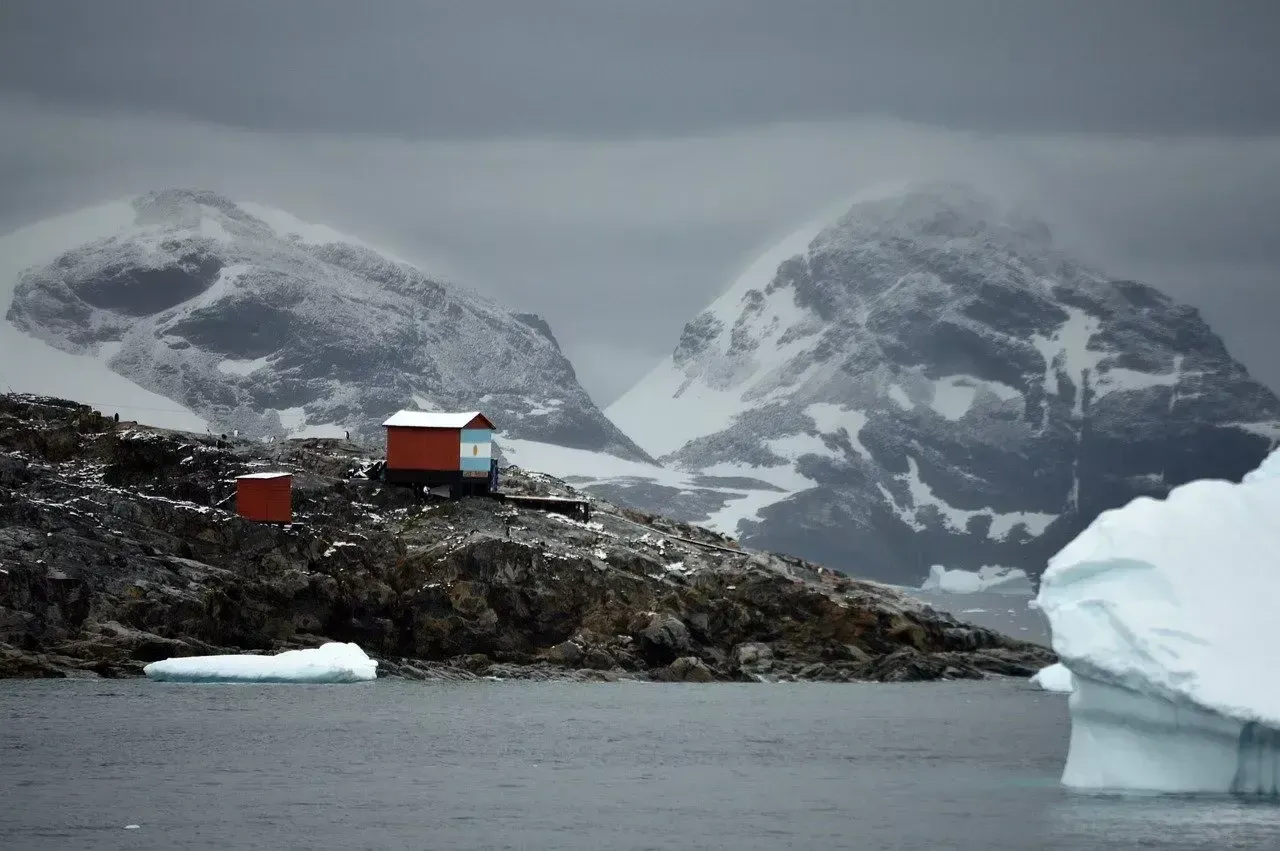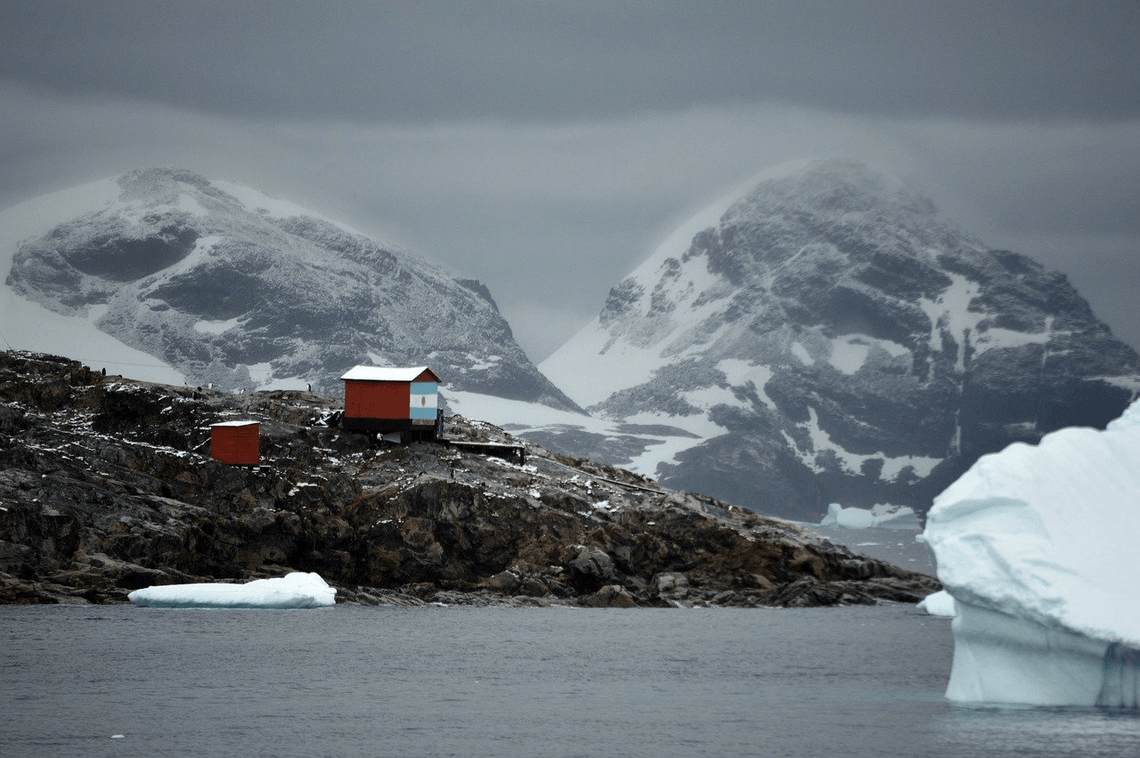The White Continent: what's there and why it needs to be on your bucket list
A single colour attributed to an entire continent makes for an intriguing prospect. But what is the White Continent and why does it continue to capture the imaginations of intrepid minds?
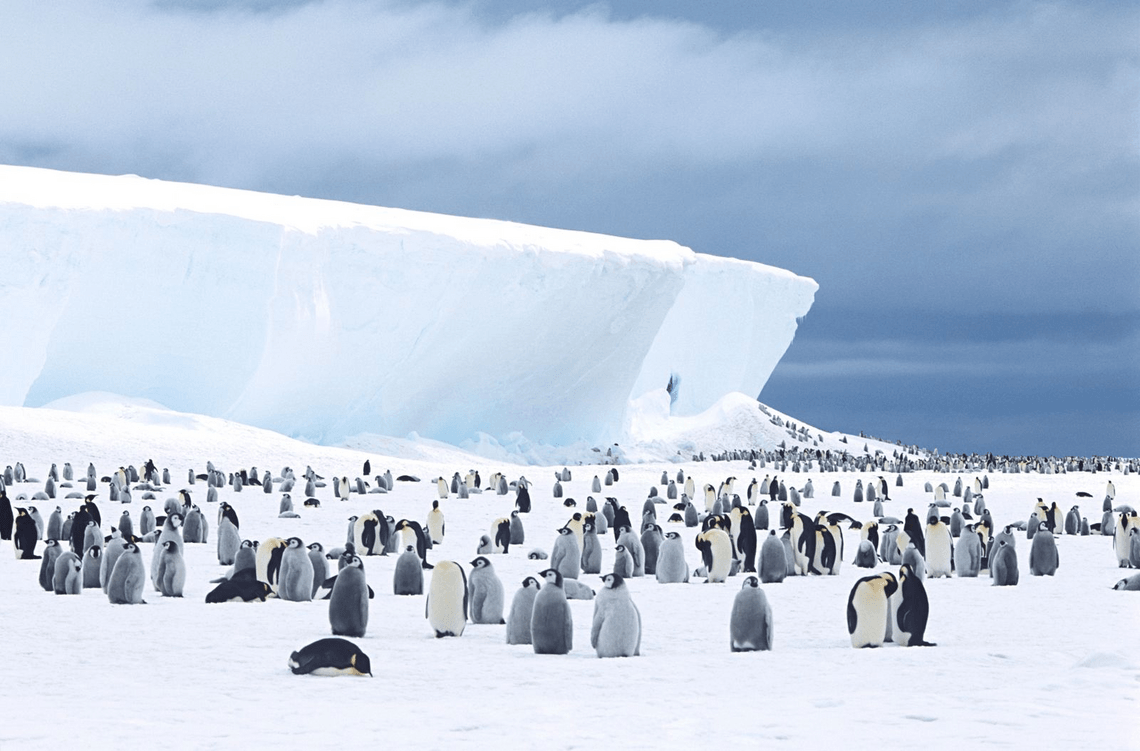
What is The White Continent, and how did it get its name?
The continent of Antarctica is also known as The White Continent. Most of its 14 million square kilometre area is covered in ice. In fact, 90% of the ice on earth can be found in Antarctica. This vast ice coverage has earned it the appropriate moniker the 'White Continent'. Visit the Antarctic on an expedition cruise with Swan Hellenic. Our Classic Antarctica itinerary allows plenty of opportunities to meet the birds of the Falkland Islands for yourself.
Location
The continent of Antarctica makes up most of the Antarctic region, the polar region located around the earth's South Pole.
Antarctica is divided into two regions known as East and West Antarctica. East Antarctica makes up 66% of the continent and is roughly the same size as Australia. West Antarctica consists of a spattering of frozen islands stretching towards the southern tip of South America, forming an extension of the Andes Mountain range.
History
For a long time, Antarctica represented the last great frontier of human exploration. Ships first explored the boundaries of the White Continent on sea voyages. By the beginning of the 20th century, some were beginning to venture into Antarctica's unforgiving interior.
Before long the 'Race to the South Pole' started. Key competitors included some of history's great explorers. Roald Amundsen, Robert Falcon Scott, Edward Adrian Wilson and Ernest Shackleton all competed in the Race to the South Pole.
Roald Amundsen's expedition team became the first to reach the South Pole on 15th December 1911. All party members successfully made the return journey in good health. Scott's team were not so fortunate. They reached the South Pole on the 17th January 1912 suffering from malnutrition, snow blindness, exhaustion and injury. They all died on their journey home.
The Shackleton Expedition
Perhaps the most infamous Antarctic exploration quest was Shackleton's attempt at the first transcontinental crossing in 1914. The team planned on using two ships, one to deposit supplies and the other, the now famed 'Endurance', to sail through the Weddell Sea. Once there, the team would begin their journey to the pole with their dog teams.
The Endurance ended up frozen in the pack ice of the Weddell Sea and eventually sunk. Shackleton's team survived for four months on the ice floe, sustaining themselves on leopard seals, fish and finally their dogs. They eventually made their way to Elephant Island and were discovered 22 months after beginning their expedition. Despite sustaining injuries, all of the crew miraculously survived.
Physical geography
The Antarctic Ice Sheet is the single largest piece of ice on Earth. The ice increases from about three million square kilometres at the end of summer to around 19 square kilometres in winter.
Antarctica is also home to a number of mountain summits with altitudes of more than 4,500 metres. The Transantarctic mountains divide the continent into eastern and western regions.
Under the ice sheet is a giant peninsula and archipelago of mountainous islands, known as Lesser Antarctica, or West Antarctica. East Antarctica is composed of older, igneous and metamorphic rocks. West Antarctica is made up of younger, volcanic and sedimentary rocks.
Climate
Antarctica is considered a desert, the largest desert on earth in fact. It is the coldest, windiest, and driest of the seven continents. The annual precipitation is less than 51mm, which qualifies its desert status.
Winter temperatures on Antarctica's coast range from -10°C to -30°C. During the summer coastal regions average at around 0°C but can reach temperatures as high as 10°C.
It's much colder in the mountains, with temperatures dropping below -60°C in winter and -20°C in summer.The polar regions have an important role to play in the global climate processes. Ice is more reflective than land or water, and the ice in the polar regions reflects a large amount of solar radiation away from the Earth's surface. As the ice cover decreases, less heat is reflected which is linked to climate change.
Vegetation
Vegetation is pretty sparse in Antarctica, with lichens, mosses and terrestrial algae among the few species that grow on the White Continent. These are found mainly around the coastal regions. The interior of the continent sustains very little vegetation.
Wildlife
The surrounding Southern Ocean however is one of the most biologically diverse marine areas on the planet. The upwelling that occurs here allows plankton and algae to flourish. This in turn attracts an abundance of fish, which creates the perfect feeding ground for larger fish and marine mammals. Blue, fin, humpback, minke and sperm whales are abundant in Antarctica.
Antarctica is home to several seal species including leopard seals, one of the most aggressive of all marine predators. This 400kg apex predator feeds mostly on penguins and fish.
Penguins
Most people will associate Antarctica with penguins. However, of the 17 species of penguins in the world, only seven can actually be found in Antarctica. And three of those seven species only live in Antarctica for part of the year.
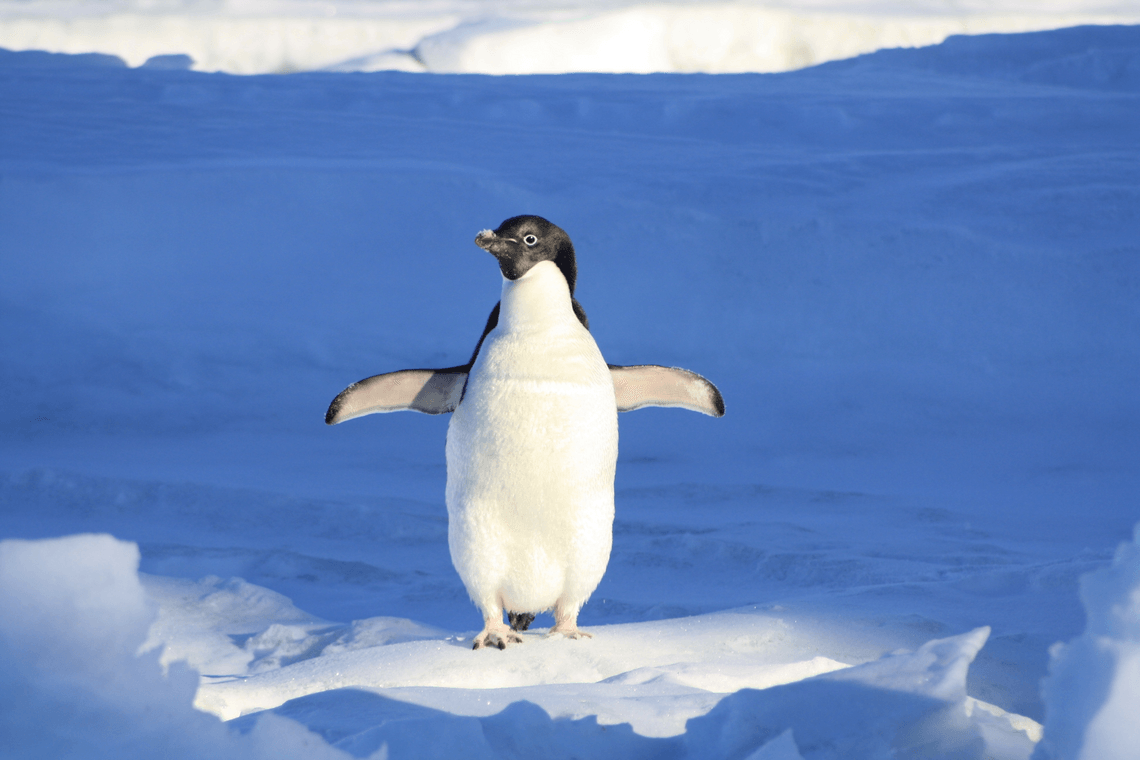
Adélie penguin
The most widely distributed penguin species in the world, Adélie penguins spend their winters in the seas around Antarctica and the rest of the year on the surrounding coastal islands.
They have the shortest breeding season of all the penguin species. They lay two eggs in mid-November, with parents sharing egg-sitting duties equally.
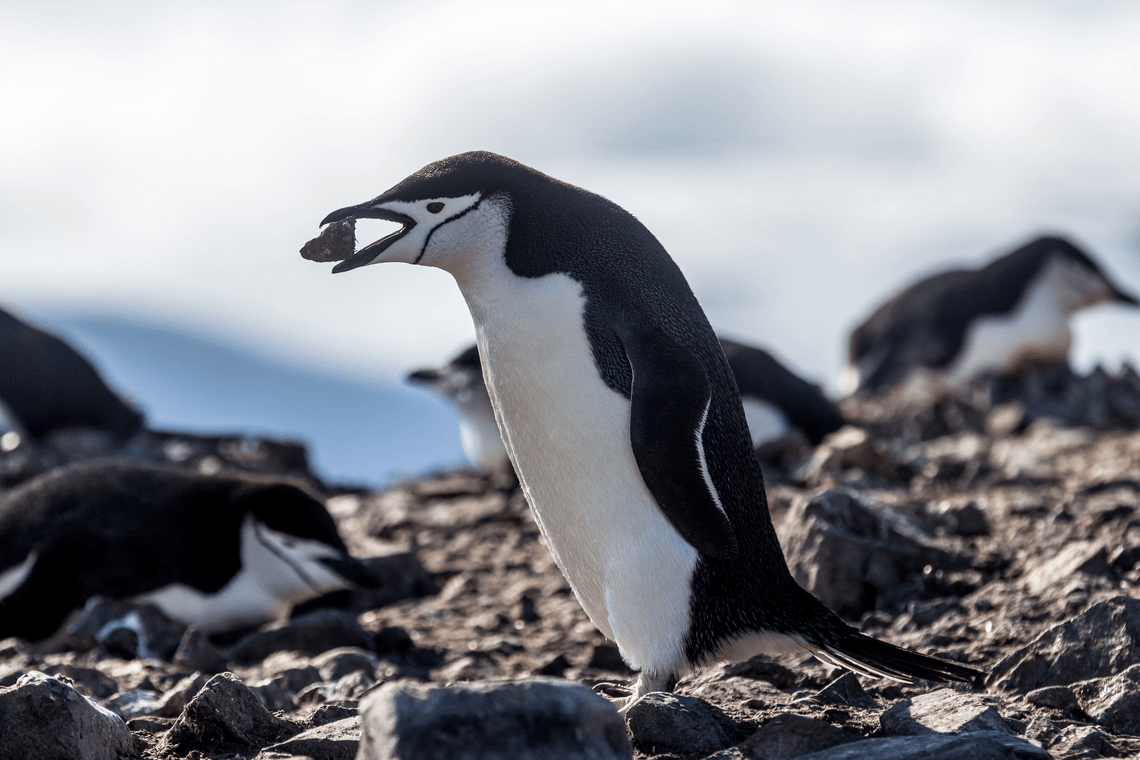
Chinstrap penguin
With markings that look a lot like the chin strap of a helmet, there are over seven million of these penguins in the world. This makes them an incredibly common sighting on an Antarctica cruise.
The breeding habits of chinstrap penguins can be quite lively. The male will compete with other males for the best nest and then he'll wait for around five days for his to mate to arrive. If she doesn't appear, he looks for a new mate. If the original mate catches him with his new mate, the two females will fight it out.
Gentoo penguin
Gentoo penguins are known for their underwater velocity, with speeds up to 36km/hour. Spending most of their time hunting krill, squid and fish, they are the third-largest penguin species behind emperor and king penguins.
Unlike other penguins, gentoo penguin chicks will fledge the nest a month after they hatch.
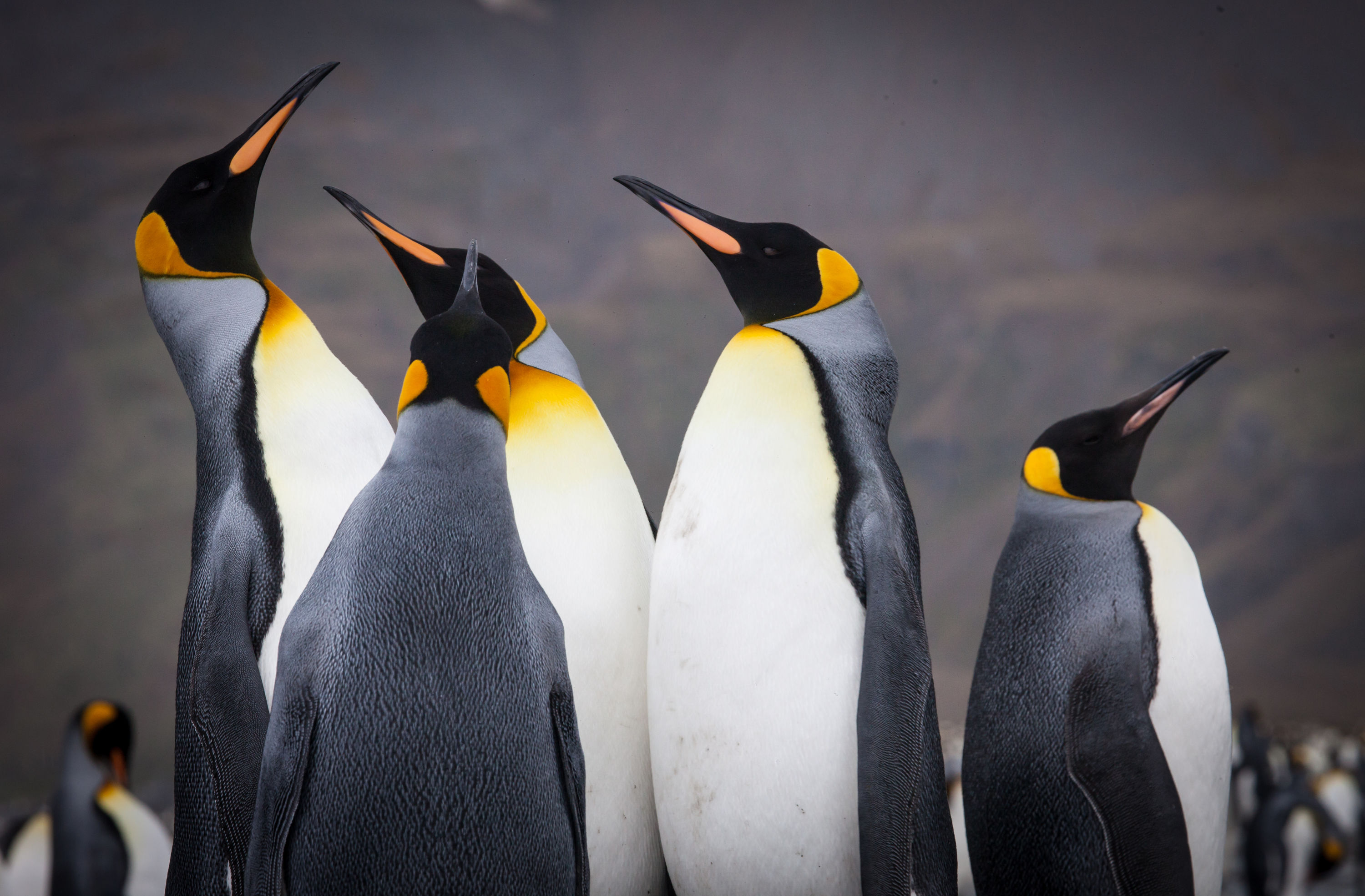
King Penguin
The second-largest species of penguin, the king penguin looks very similar to the emperor penguin. The main difference is their lighter plumage colour.
King penguins only spend part of the year in Antarctica. They breed in large colonies, only laying one egg at a time. It has been observed that king penguins enjoy a mid-afternoon nap, sleeping more deeply in the afternoon than in the morning.
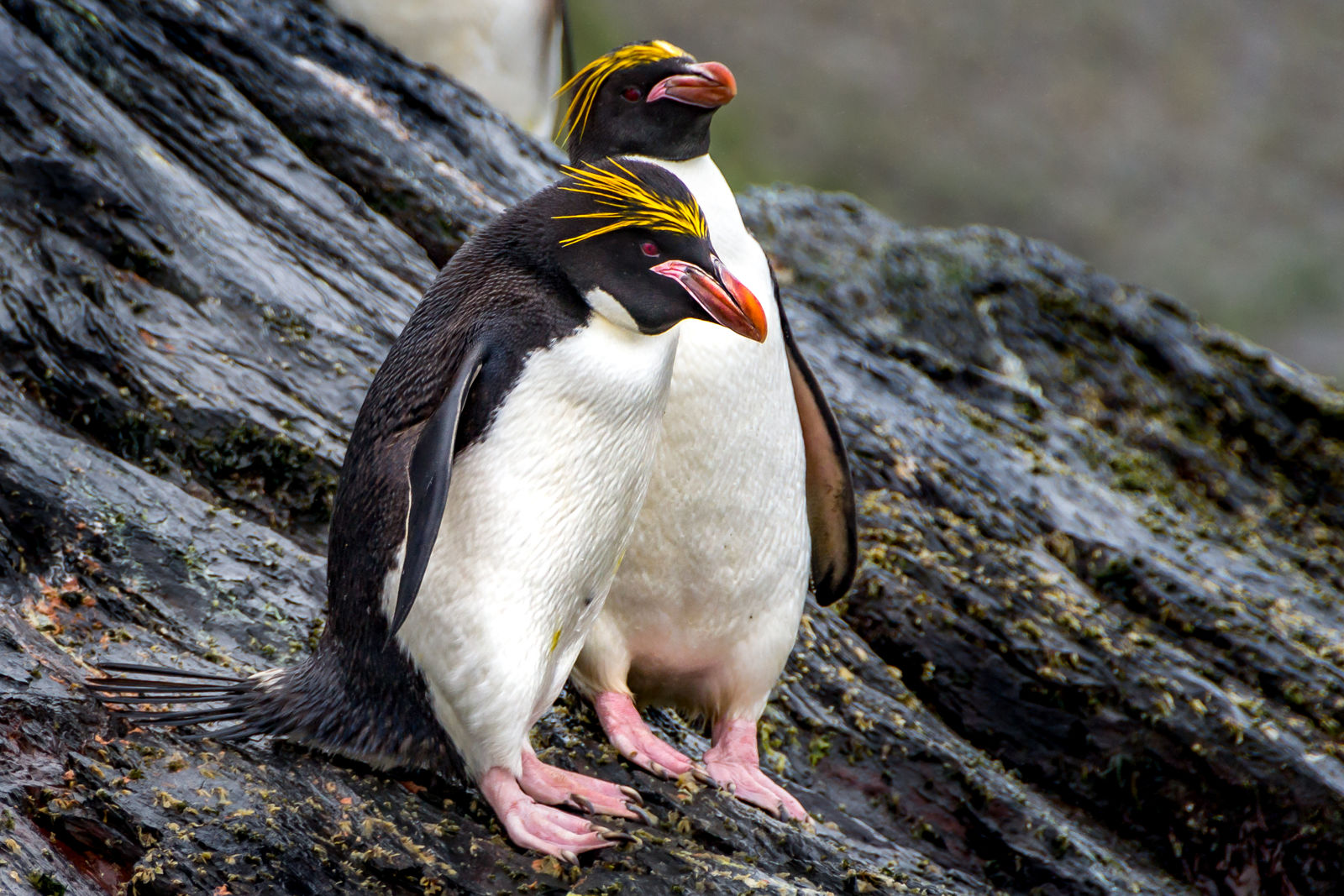
Macaroni penguin
These quirky looking little penguins aren't frequent visitors to the White Continent. Their huge breeding colonies can instead be found in the Falkland, South Sandwich and the South Orkney Islands.
Parents share incubating duties, taking the task so seriously that they will both often lose half of their body weight in the process.
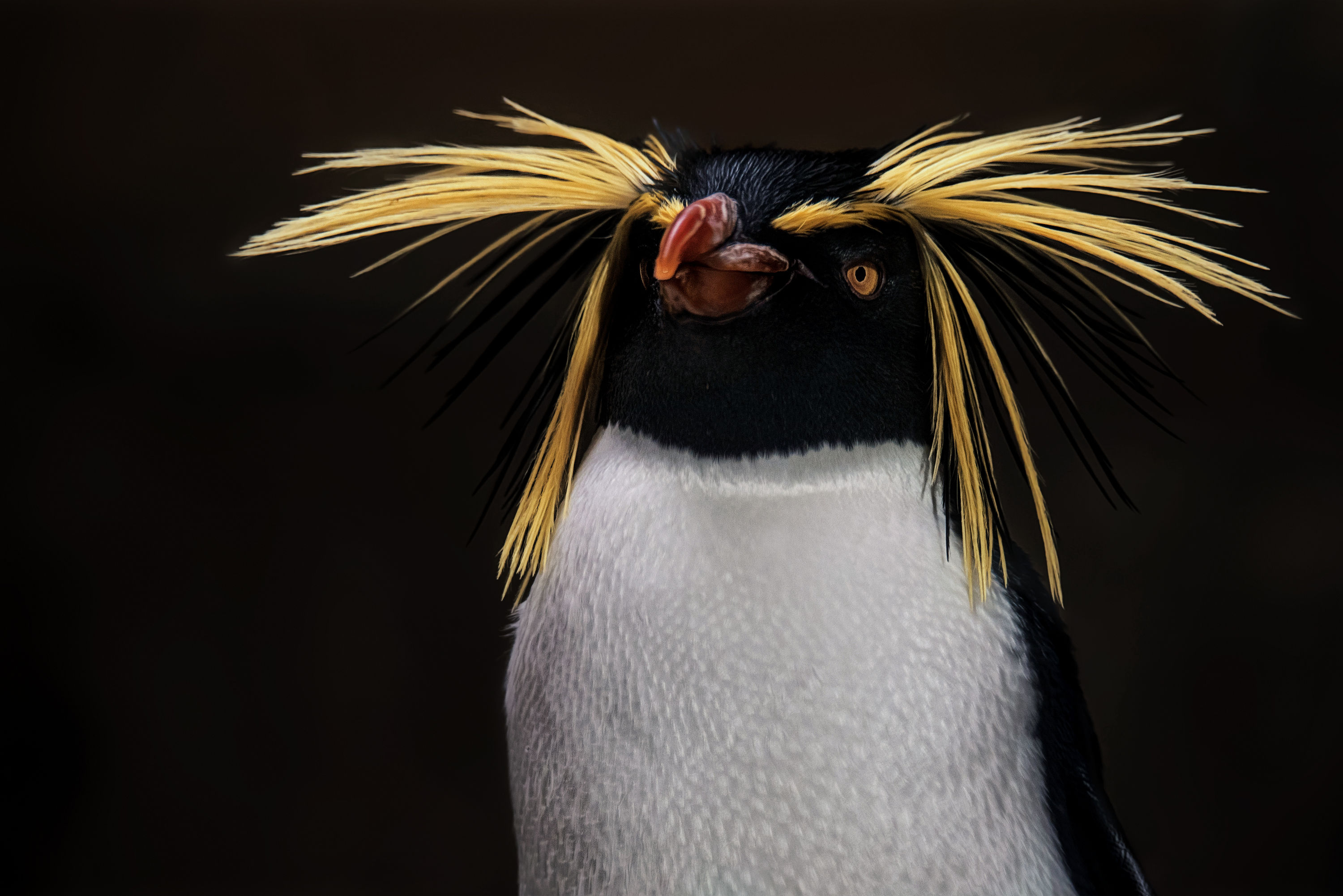
Rockhopper penguin
Rockhoppers, with their ornate yellow eyebrows, are one of the smallest penguin species. They are usually found on the rocky shorelines of the islands north of Antarctica, hence their name.
Sadly habitat loss and commercial fishing have led to a 30% decline in rockhopper population over the last 30 years.
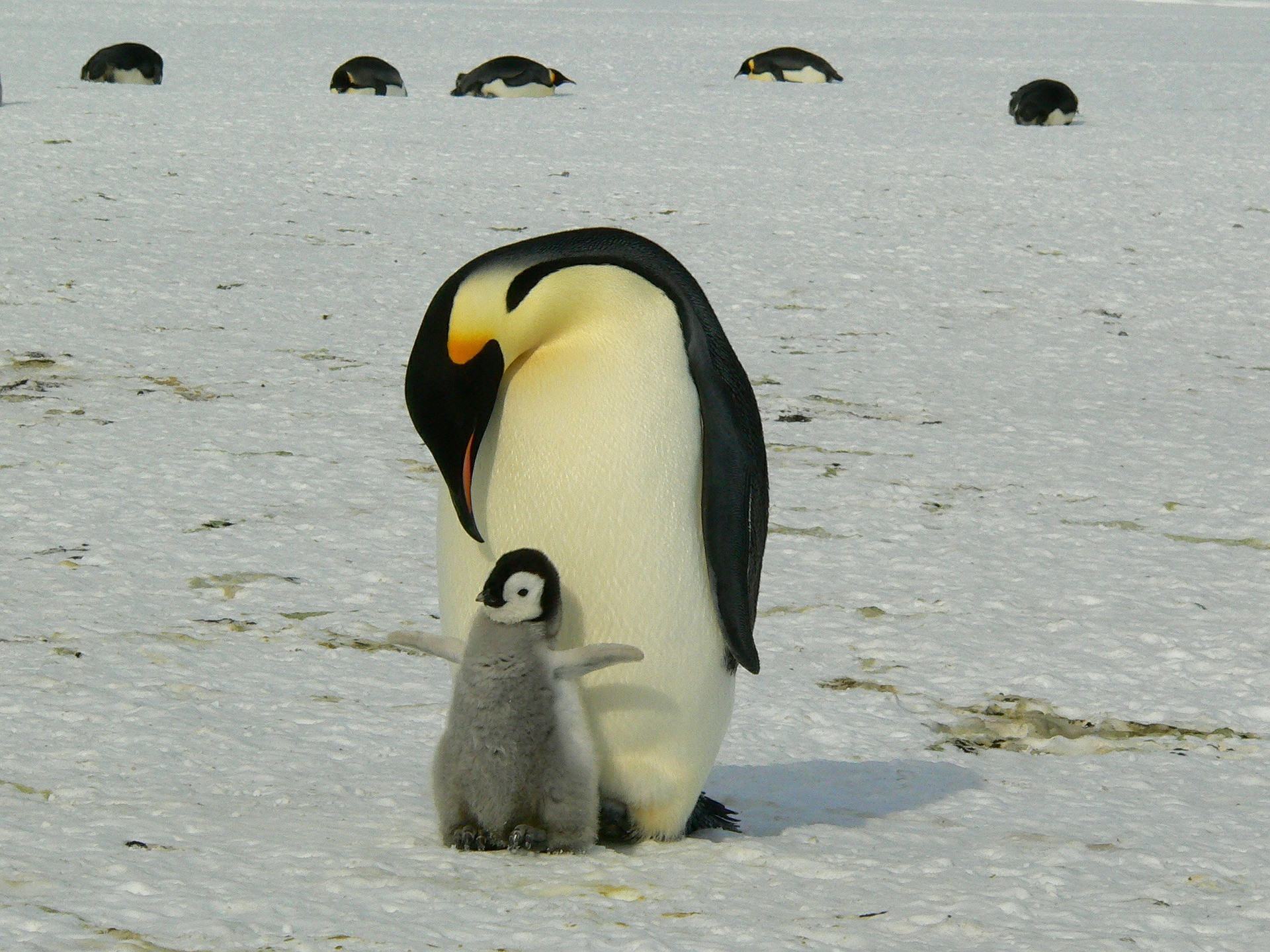
Emperor penguin
The largest of all the penguin species, emperor penguins can grow up to 122cm tall and weigh up to 45kg. They are usually found in the Ross Sea and Weddell regions and are rarely seen in sub-Antarctic waters. For this reason, they are not a common sight on exp edition cruises.
They are the only bird species in the Antarctic that breeds during the winter. Interestingly they breed entirely on sea ice. Most emperor penguins live their entire lives without stepping foot on land.
People and culture
The White Continent has no permanent human residents. At any one time between 1,000 and 5,000 researchers live and work in the research centres there, which are staffed year-round.
Researchers from many scientific backgrounds study in the Antarctic. These scientists work at government-supported research stations and come from many different countries.
Geographers map the surface of the continent. Meteorologists study climate patterns and pay special attention to Antarctica's important role in climate change. Climatologists track the history of the Earth's climate by extracting long ice cores. Marine biologists study the behaviour of whales, seals and squid. Astronomers get the clearest view of space available from Earth.
Even astrobiologists look for signs of life in space from Antarctica. In 1984, a meteorite from Mars was found in Antarctica. The bacteria imprints on the meteorite were similar to some found on Earth. It remains the only scientific evidence of life outside Earth.
Incidentally, ten children have been born in Antarctica since the research stations were established.
Why should Antarctica be on your bucket list?
The White Continent is the last untouched frontier. Exploring this remote wilderness is the ultimate adventure. There’s getting off the beaten track and then there’s Antarctica. The White Continent has sparked the imaginations of the greatest explorers for centuries.
Follow in the footsteps of legends
The legends of the adventurous explorers of the past, including Robert Falcon Scott, Ernest Shackleton and Sir Edmund Hillary live on. The historic huts where they plotted their explorations are still standing, preserved by the cold, dry climate.
Mawson's Hut is a collection of buildings erected by the Australian Antarctic Expedition in 1911. As one of the only sites remaining from the earliest days of Antarctic exploration, the location has been declared a UNESCO world heritage site.
Wildlife like nowhere else on earth
Of course, many people visit Antarctica to meet the hardy and fascinating wildlife that has managed to carve out an existence in this unlikely corner of the world.
Watch seals sunbath on floating sea ice, listen out for the hiss of a humpback whale and keep your eyes peeled for the dorsal fins of the orca pods that patrol the waters.
The penguins are often the star attraction of course and can be equally as fascinated by humans as our guests are with them.
The call of adventure
Aside from the idea of venturing where few others ever will, an Antarctica expedition means daily hands-on adventure. Kayaking, hiking and Zodiac cruising are all par for the course on an expedition cruise to the White Continent.
The experience of travelling through one of the most remote places in the world, the only place on earth that humans have never colonised, is incredibly thrilling.
Other-worldly landscapes
A vast, treeless land of rock and ice, Antarctica is the closest that most of us will get to stepping foot on another planet.
All of this to a backdrop of extreme weather and ice conditions creates an environment that really must be seen to be believed.
Exploring the White Continent with Swan Hellenic

Swan Hellenic has been guiding adventurous travellers to see what others don't for over seven decades. Your trip to the White Continent with Swan Hellenic will include world-class service, expert-led adventure and valuable time with our knowledgable guest lecturers.
Aboard our polar-class ice ship
Experience the White Continent in sophistication and style aboard our boutique ice-class ship. From the world's southernmost city, Ushuaia we make our way across the notorious Drake Passage, visiting the South Shetland Islands before arriving in Antarctica.
Sea days can be spent enjoying the comforts of your 5-star vessel. Feast on delicious chef-prepared meals, mingle with a cocktail drink in hand, relax in our sophisticated Observation Lounge or indulge yourself in the onboard spa, gym and salon.
Learn from expert naturalists
We’ll also have guest lecturers aboard sharing their extensive knowledge as part of an informative lecture programme. Our guest lecturers are experts in their fields and on hand to answer any curiosities our passengers may have.
Hands-on adventure
When we reach the South Shetland Islands and Antarctica, the fun really begins. Our expedition team will be ready to guide our guests on a series of unforgettable excursions.
Our extensive shore excursion program is designed to help our guests really get under the skin of this incredible place. Kayaking, hiking, and wildlife viewing are just a few of the experiences on offer.
Our guests can really connect with this special place on our Zodiac expeditions. From water level we explore this icy world, meeting waddling penguins, curious seals, soaring albatrosses and breaching whales along the way.
Citizen Science Lab
Antarctica is a place of incredible scientific significance. Thousands of scientists from an array of disciplines are conducting research on the continent at any one time. This work is incredibly important, not just for Antarctica and its wildlife, but also for the planet. Understanding Antarctic ice is crucial to climate change research.
In response, we have launched our Citizen Science Lab. This allows us to transport scientists and researchers to Antarctica, and other areas of the world that are difficult and expensive to reach. They are able to continue their work on our onboard lab whilst they travel.
Guests can speak to the scientists and gain an understanding of the current research being carried out in this incredible part of the world.
Antarctica has a thrilling history, astounding geography and jaw-dropping wildlife. And it can be explored in complete comfort and style in the company of world-class experts. The only question that now remains is, why wouldn't the White Continent be on your bucket list?
